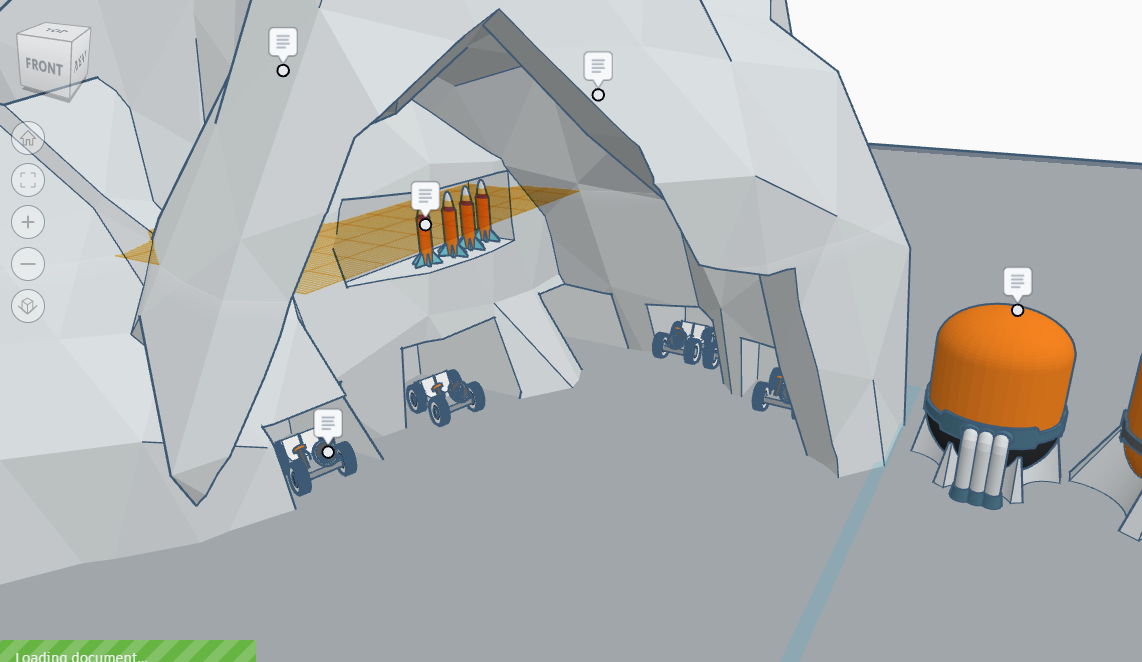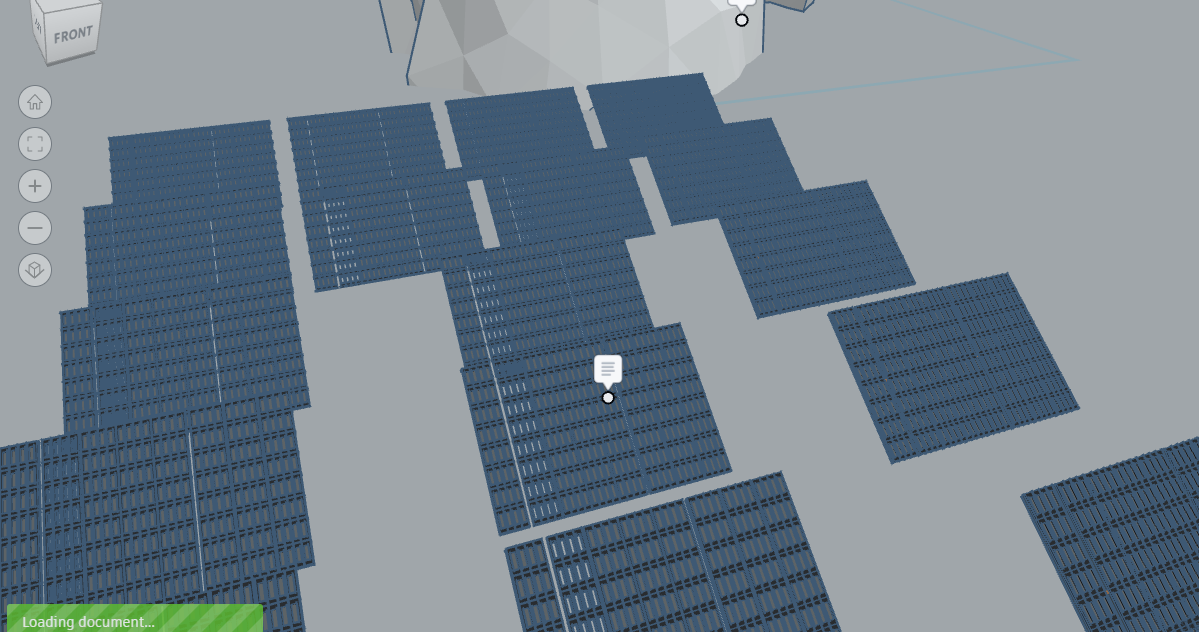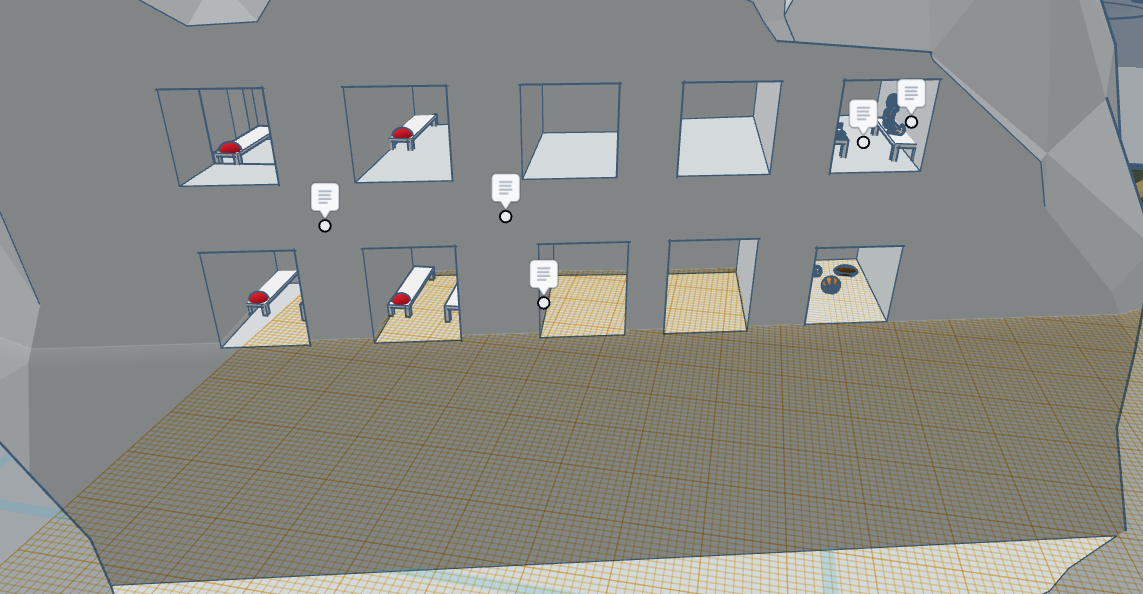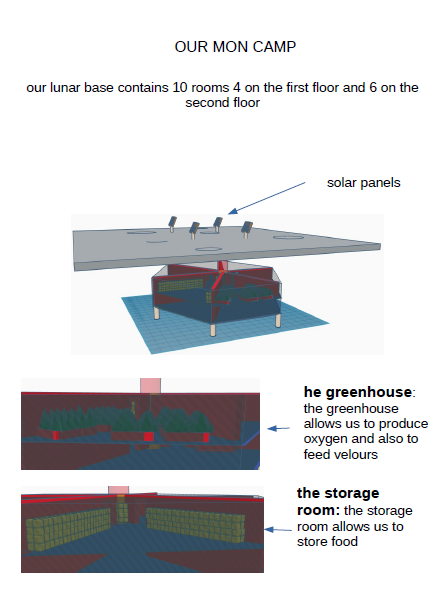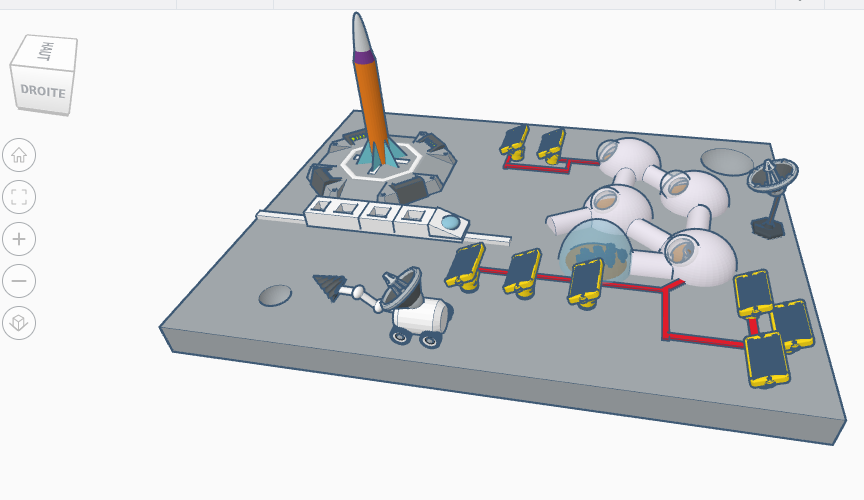Moon Camp Explorers Gallery 2021-2022
In Moon Camp Explorers each team’s mission is to 3D design a complete Moon Camp using Tinkercad. They also have to explain how they will use local resources, protect astronauts from the dangerous of space and describe the living and working facilities.
Team: French connection!
European School Den Haag Den Haag Netherlands 14 3 / 0
External link for 3d
|
Project description
Our Moon base is a project realized by Antoine, Maxime and Stélio. The moon base will be separated in three main sections :
|
||||
|
Where do you want to build your Moon Camp?
Close to the lunar poles Why did you choose this location?
We chose to be close to the lunar poles. More precisely, we will be in the mons Pico (45.7° N, 8.9° W), and close to a big crater. We chose this location because :
How do you plan to build your Mooncamp? Which materials will you use?
Our moon camp will have one main base with 4 bedrooms for astronauts, one laboratory, one gymnastic, one greenhouse… Outside the main base will be one cleaner of dirty water so that absolutely no water go out of the base (there will be always the same amount of water in the base). There will also be an extractor of lunar materials in lunar regolith (ilmenite, hydrogen, iron, and oxygen). There will also be solar panels and a solar thermal energy recovery system. On the top of the mons Pico will be a parabolic antenna to communicate with Earth. |
||||
|
Water
|
Food
|
Electricity
|
Air
|
Protection
|
|
Water : We will have a system that recovers and cleans all the water used in the base so there is always the same amount of water. In case of problem, water will be provided by the chemical reaction : FeTiO3+H2 Fe+TiO2+H2O (ilmenite + hydrogen Iron + water + Titanium oxide). Ilmenite and hydrogen are present in lunar regolith and will be provided thanks to an extractor. |
Food : Food will be provided thanks to a greenhouse present in the base. The laboratory will provide cultured meat. |
Power : Power will be provided by solar panels and the solar thermal energy recovery system. |
Air : In the lunar regolith are many elements which could be useful to our base. Among the more abundant is oxygen. The atomic oxygen content in the regolith is estimated at 45% by weight. We will have an extractor of resources in lunar regolith |
1. Radiation : solar storms are very dangerous because radiation is dangerous for astronauts. Therefore, our moon base will entirely be recovered from polyethylene which is a widely used material for protection of radiation in space. In addition, our base is almost all recovered of the mons Pico. |
|
Describe a day on the Moon for one of your Moon Camp astronauts
A normal day on the moon for an astronaut on our moon base consists of some steps. First the astronaut wakes up. He sleeps in a little room dug in a mountain. He then goes in a little room also dug in the cave. It is the sports room. He trains for one hour. He then goes to eat in his bedroom. He explores the moon for a while to get some minerals to study. He goes to the laboratory to analyze them and find uses to the mineral. He always eat in his bedroom. He checks if all the machines are working okay. On a special day, he would go on mission and visit new areas of the moon. He goes back to the laboratory to study. He goes to eat and then goes to sleep. |
||||


